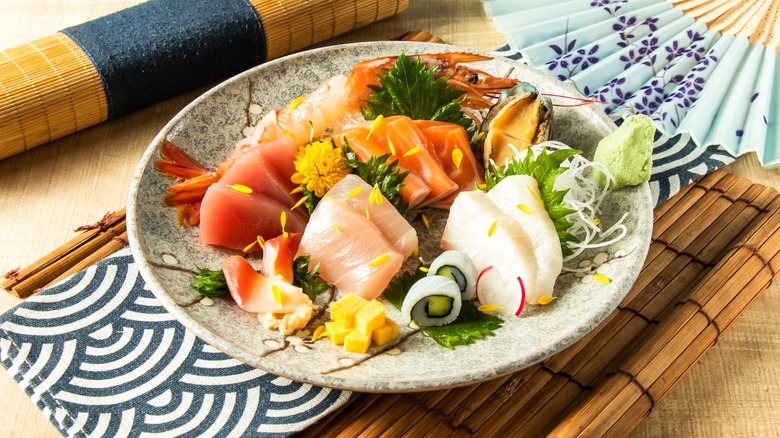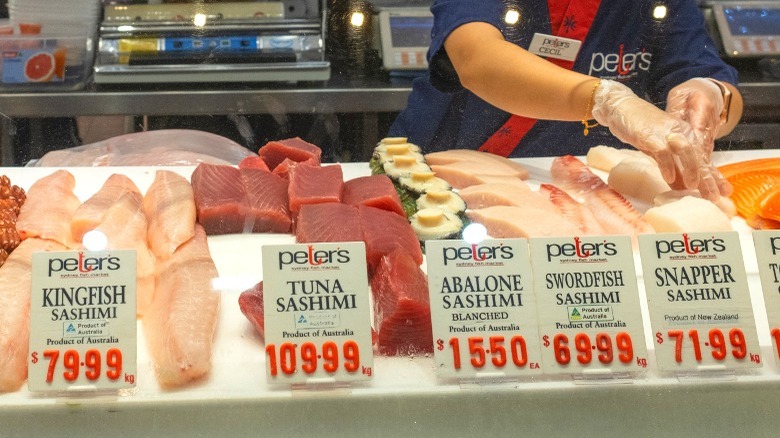The Absolute Best Type Of Fish For Sashimi
In Japanese cuisine, the beauty of many dishes is all about appreciating the natural qualities of the ingredients at play. Nothing quite exemplifies this philosophy better than sashimi. No, it's not the same as sushi, where the crucial ingredient is rice, not fish (hence why you can also have egg and vegetable sushi). Sashimi specifically refers to raw meat, most commonly raw fish. It's a culinary tradition that dates back centuries, and over that time has expanded to include a vast number of seafood species.
To find out which fish makes for unforgettable sashimi, we asked chef Shingo Akikuni, who runs the Michelin-starred omakase restaurant Shingo. If anyone knows sashimi, it's him, and he highly recommends sawara, or line-caught Spanish mackerel. What makes it so special? "Sawara has great fat," the chef says. "I like to prepare it by quickly torching the skin/fat side so that you can enjoy it both raw and with the fat rendered a bit for a great texture and mouthfeel."
While chef Akikuni's recommendation of Spanish mackerel is sublime, it's also a heavily-regulated fish in some areas, and mackerel numbers have been on the decline at least since 2021. As such, it can be tricky to get your hands on (and rather expensive). Luckily, there are plenty of other brilliant options when it comes to making sashimi.
Other types of fish you can use for sashimi
Two of the most popular choices for sashimi are sake (salmon) and maguro (tuna). Salmon sashimi is wonderfully fatty, delivering an unctuous, soft bite and a full, rich flavor. Tuna can be very fatty, if it's cut from the belly of the fish, or leaner (known as akami) with a deep color and a touch of fresh sweetness. You aren't just limited to fin fish, either — shellfish such as prawns (known as ebi in Japanese) make for delicious sashimi, and you can even teach yourself what abalone is and how to eat it in order to make a super luxurious version.
If you want to try your hand at making sashimi, there are a couple of things to bear in mind. The most important is buying the right fish. Some raw fish can contain parasites that you definitely don't want to be eating, so avoid freshwater fish for raw dishes like ceviche, sushi, and sashimi and choose something like tuna, which is resistant to bugs.
While "sushi-grade" isn't a term regulated by the FDA, and you should carefully inspect all fish for freshness no matter how it's labelled, it doesn't hurt to look for so-called sushi-grade fish. It's not as hard to find as you'd think, as even Costco sells sushi-grade salmon. If you want to be doubly sure that your at-home sashimi is delicious, try making homemade dry-cured tuna and other fish for the most tender bite and easier slicing.


